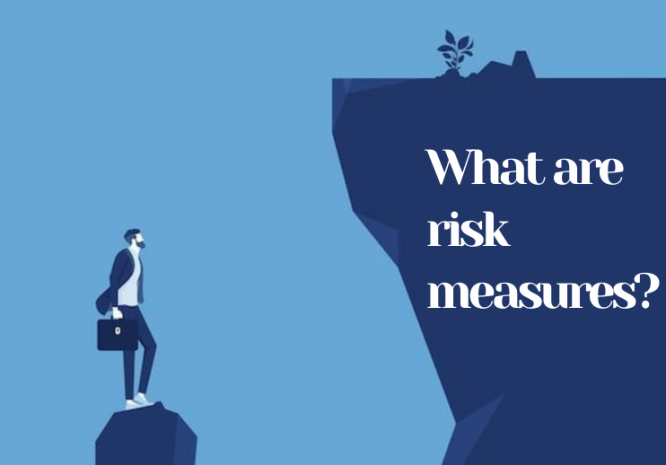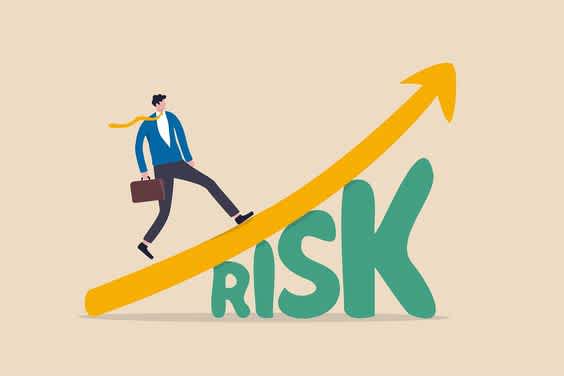Top 5 Risk measures in trading and how they can help you.
Trading Strategies
What are Risk measures?
Risk measures in trading are metrics and indicators used to assess the potential risks associated with a trading position, portfolio, or overall market exposure. These measures help traders and investors understand and manage the level of risk they are exposed to.
Types of risk measures
In trading, there are several principle risk measures that traders and investors commonly use to assess and manage risk. These risk measures collectively provide traders and investors with a comprehensive toolkit to understand and manage risks associated with different aspects of their portfolios and trading strategies.
Here are some key risk measures:-
1.Alpha
What is Alpha:
Think of alpha as the "extra" return that an investment gives you, beyond what you'd expect based on the overall market's behavior.
Positive Alpha:
If your investment has a positive alpha, it's like your buddy outperforming expectations. It means your investment did better than what you'd predict just by looking at the general market trends.
Negative Alpha:
On the flip side, if your alpha is negative, it's a bit like your investment underachieving. It suggests that your asset didn't do as well as you'd anticipate based on what's happening in the broader market.
Why it Matters:
Alpha helps us figure out if a particular investment manager or strategy is adding value. If they consistently bring in positive alpha, it's like saying, "Hey, they're doing something right and beating the odds!"
2.Beta
What is Beta:
Imagine beta as a measure of how much a stock or investment dances to the beat of the overall market. It's like figuring out if your investment is the life of the party or the calm and collected type.
High Beta:
If your investment has a high beta (let's say, above 1), it's like having a dance partner that goes all out. When the market moves, this investment tends to move even more – it's a bit of a wild dancer.
Low Beta:
On the flip side, if your investment has a low beta (maybe below 1), it's like having a dance partner who stays chill. When the market does its thing, this investment tends to be more laid-back – not jumping around as much.
Why it Matters:
Knowing the beta of your investment helps you understand how much it might swing around when the overall market moves. High beta can mean potentially bigger gains, but also bigger losses. Low beta might mean steadier, but less dramatic, moves.
3.Standard Deviation
What is Standard Deviation:
Think of standard deviation as a measure of how much an investment's returns tend to swing around its average. It's like checking the typical distance the investment moves away from its usual performance.
High Standard Deviation:
On the other hand, if your investment has a high standard deviation, it's a bit like having that friend with unpredictable timing. Returns might vary widely from the average – sometimes really high, sometimes really low.
Low Standard Deviation:
If your investment has a low standard deviation, it's like having that friend who's pretty consistent. The returns stay close to the average, and there aren't big surprises – like a friend who's reliably on time every day.
Why it Matters:
Standard deviation helps you understand the potential for big ups and downs in your investment. A low standard deviation might mean a more stable, less risky ride. A high standard deviation could mean a more unpredictable journey with the potential for both great wins and losses.
4. The Sharpe ratio
What is the Sharpe Ratio:
Think of the Sharpe Ratio as a way to figure out if the extra return you're getting from an investment is worth the additional risk you're taking. It's like asking, "Is the extra reward worth the extra rollercoaster ride?"
High Sharpe Ratio:
If your investment has a high Sharpe Ratio, it's like saying you're getting a good amount of extra return for the risk you're taking. It's like choosing the rollercoaster with the most exciting twists and turns, but where the thrill is justified by the enjoyment.
Low Sharpe Ratio:
On the flip side, if your investment has a low Sharpe Ratio, it's like saying the extra return doesn't really compensate for the added risk. It's akin to choosing a rollercoaster that's a bit too shaky for the excitement it provides.
Why it Matters:
The Sharpe Ratio helps you assess if you're getting a good deal for the level of excitement your investment is providing. It's a way to balance the thrill of potential gains with the prudence of managing risk.
Learn about Sharpe ratio and Information ratio.
5. Liquidity risk
What is Liquidity Risk:
Liquidity risk is like checking if you can sell or buy an investment easily without causing a major impact on its price. It's about making sure you're not stuck in a situation where you can't get in or out of a trade smoothly.
High Liquidity:
If your investment has high liquidity, it's like being at a social gathering where there's plenty of room to move. You can easily buy or sell without drastically affecting the investment's price. It's smooth sailing.
Low Liquidity:
On the other hand, if your investment has low liquidity, it's like being at a packed concert. Trying to buy or sell might cause more noticeable ripples, potentially impacting the investment's price. It's like trying to move through a crowded room without bumping into people.
Why it Matters:
Liquidity risk matters because if an investment isn't easy to buy or sell, you might end up facing challenges, like selling at a lower price than expected or not finding a buyer when you need one. It's about making sure your investment is in a social setting where you can comfortably maneuver.
![What is Quantitative trading? Examples and strategies. [+FAQs]](https://images.ctfassets.net/r9ab0t7s7887/nmmgmd6CJacSEgqp99fYG/5e3b787ddb31b5195d929899df70c6cb/quant_trading.png?w=801&h=452&q=50&fm=png)

